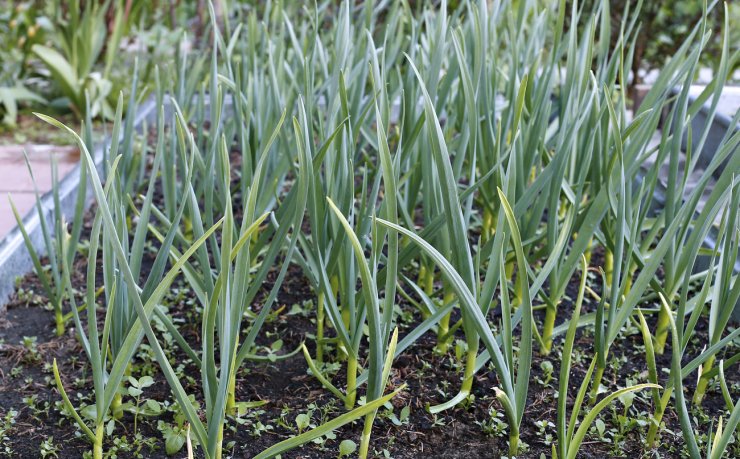
A healthy bed of garlic
Rotate crops regularly—Many bacteria, fungi, and viruses live in the soil for years and are just waiting to prey on your garlic plants. To minimize the likelihood of disease, plant garlic no more than once every three years in the same location.
Avoid planting other plants from the allium family (onions, shallots, leeks, scallions, chives) in the same area. As members of the same plant family as garlic, they may be susceptible to the same diseases and having them nearby could facilitate rapid spread of any developing disease.
Improve your soil composition—Before planting your garlic, add a good amount of compost or organic matter to improve the soil. Extra nutrients and good aeration help grow stronger plants that will resist disease and infection.
Water your garden properly—Don’t overwater your garlic plants. Overwatering leads to consistently wet conditions, which allows bacteria, fungi, and viruses to thrive and multiply, and may cause garlic bulbs to rot in the moist soil.
Destroy infected plants—Throw away or burn infected plants. Don’t keep infected plants over the winter in your garden, and don’t add them to your compost pile. Disease-ridden plants, even when dead, can spread the disease to other plants or even to your soil.
Have you tried any of these techniques for avoiding pests and diseases with your garlic plants? Please share your ideas below in the comments.


 Previous
Previous

